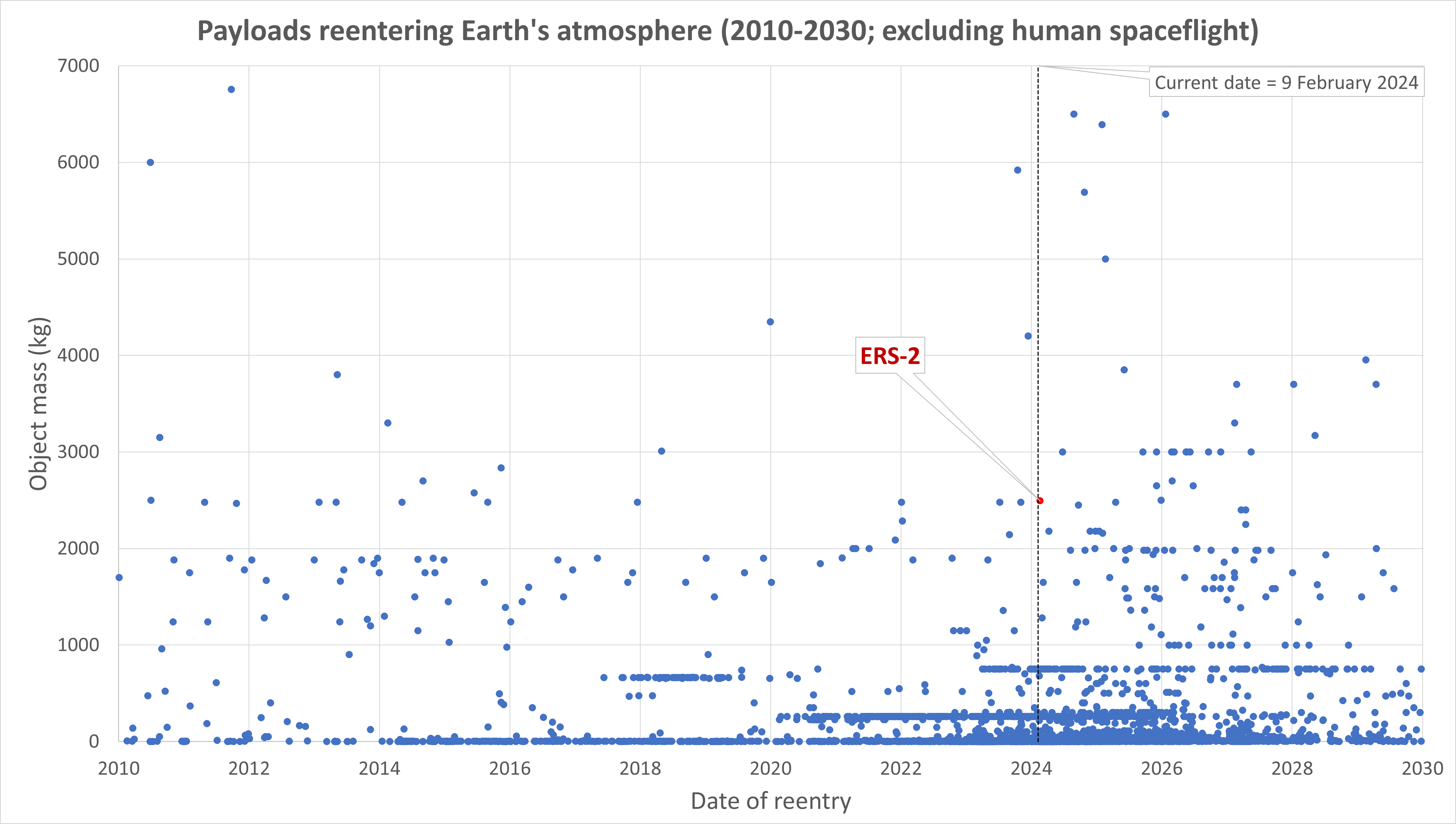The European Remote Sensing 2 satellite (ERS-2) was launched in 1995 at a time when the notion of climate change was far less appreciated and understood than it is today.
Together with ERS-1, it carried a suite of scientific instruments and technologies into orbit that provided scientists with the data they needed to better understand the impact that humans have on the planet.
The ERS satellites set the stage for many successor missions dedicated to studying our changing world, such as Envisat, the MetOp weather satellites, ESA’s Earth Explorer scientific research missions and the Copernicus Sentinels, as well as many other national satellite missions.
The ERS-2 mission came to an end in 2011, and the satellite was deorbited to reduce its impact on the space environment. It will undergo atmospheric reentry in February 2024.

This graph shows how ERS-2 compares to other similar objects reentering the atmosphere between 1 January 2010 and 1 January 2030.
The graph only shows other ‘payloads’, where the term ‘payload’ is roughly equivalent in common usage to the word ‘satellite’. It does not include objects that successfully completed a ‘controlled’ reentry as ERS-2’s reentry is ‘natural’. It also does not include spacecraft related to human spaceflight, such as the capsules delivering astronauts to and from the ISS, or other types of objects in Earth orbit such as rocket bodies and other pieces of space debris.
For an object reentering in the future (as of 9 February 2024), the predicted reentry date assumes that it conducts no further manoeuvres. However, some of these objects are active satellites. They are currently on course to reenter the atmosphere at the indicated date, but this may change if they use their propulsion systems to alter their orbit beforehand. Objects of four tonnes or more are likely to perform a ‘controlled’ reentry to minimise any associated risks. The two large objects seen in 2010/2011 attempted to perform controlled reentries but were unsuccessful.
With all of this in mind, we can see that multiple objects similar to ERS-2 undergo atmospheric reentry each year.

Discussion: no comments